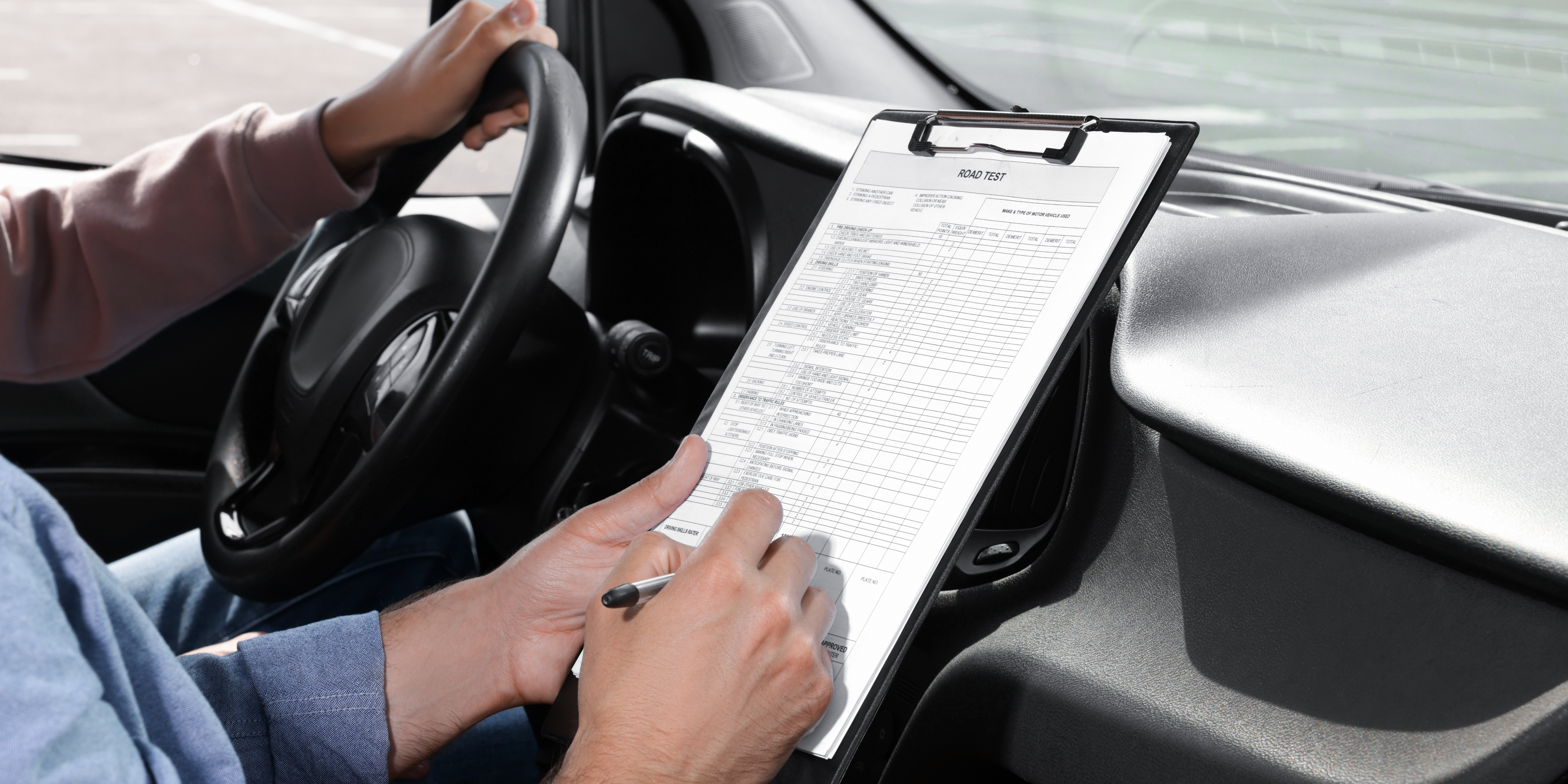The answer to the best season to take your driving school lessons in is winter. We know driving in the winter can seem scary, especially for new drivers. In Canada, it is essential that everyone knows how to drive in the winter since there are many potential hazards and because it could snow for 7 months out of the year. The best thing to do is take your driving school lessons at this time (November-April).
It takes up to 10 times longer to stop on snow and ice than it does on the pavement
STEERING AND SPEED CONTROL
The main point of taking driving school lessons in the winter is the ability to teach proper steering and speed control in the poor road conditions. There are many road hazards in the winter, particularly black ice, and having a driving instructor in the car with you gives you added safety in these moments. All driving school packages come with the ability to use your driving instructor’s car for lessons and these cars come with the added bonus of an extra brake pedal. This brake pedal allows for the driving instructor to help you in the case of an emergency.
SKIDDING
A skid is when the vehicle slides, typically sideways on slippery ground or as a result of stopping or turning too quickly. Your driving school and instructors will be very knowledgeable about how to avoid or stop a skid as it takes place. There are some things you can do as a driving student to prevent skids. A good tip to remember is to keep an appropriate distance between you and the car ahead of you, a general tip is 4 car lengths for every 10 km/h. You can also slow down significantly before entering a curve or bend. If you take a curve or brake suddenly while going around a bend it could cause a skid. Something that they might teach you in driving school is how to check that your tires have adequate tread. Most tires are made with a “wear bar” in the treads and if the level of the tire reaches that of the “wear bar” then you need new tires.
FRONT WHEEL SKID
A front wheel skid occurs when you’re drifting in a direction that is not the intended one. Usually this type of skid occurs when you enter a curve or turn too quickly. The main thing to remember with a front wheel skid is to first ease off the gas (or in a manual car, depress the clutch) then try and steer toward your target direction. If you cannot regain control of the car within 2-3 seconds then you press the brakes lightly. If your car does not have ABS (anti-lock brakes) then you may need to pump the brakes lightly. Keep in mind you should not brake too suddenly because this could cause your wheels to lock and worsen the skid.
REAR WHEEL SKID
Typically known as “fishtailing”, a rear skid occurs when the back end of the car slides out to the right or left. When people tell you to “steer into the skid” they typically mean to do it when your car is engaged in a rear wheel skid. What you want to do in this situation if your car is sliding to the right is to not immediately turn the wheel completely to the right to compensate, but to turn your wheel to the right just enough to align the front and back wheels. Pick a target on the road and remain calm. If you ease off the accelerator and avoid the temptation to brake hard then you will be perfectly fine.
30% of car accidents in Canada happen on snowy or icy roads.
WINTER TIRES VS. ALL-SEASON TIRES
With the heavy snowfall that comes to Canada it is important to think about what tires are best for you. The main options are all-season or switching between regular and winter tires. The main benefit of having tires specific to winter driving is that they have the best grip on ice and snow. They were designed that way. They are made to be flexible enough to give you traction when driving over ice and snow while all-season tires can become stiff and make your car hard to handle. If you live in Northern Ontario, the Prairie Provinces (Alberts, Saskatchewan, Manitoba), or BC then you may have access to studded tires. These tires have metal studs embedded within the tread and are meant to dig into the ice which will provide you with more traction.
All-season tires have their own benefits as well. In the short-term they can be very cost-effective. Especially since Canada does not enforce mandatory winter tires, you can use these all year round without having to pay installation fees when the season changes. They are also easy to drive since they are meant for various weather conditions. The main concern you need to keep in mind when using all-season tires is that they are technically not the best for summer or winter. They are good across the board but not the best in any category.
The winter season can be daunting to anybody, but taking your driving school lessons in the winter can help with any anxiety new drivers are feeling. Even if you’ve already completed your classes or even have your G2 or G license you are still able to book individual classes to refresh your skills, improve your defensive driving or even gain a bit more confidence on the road.






